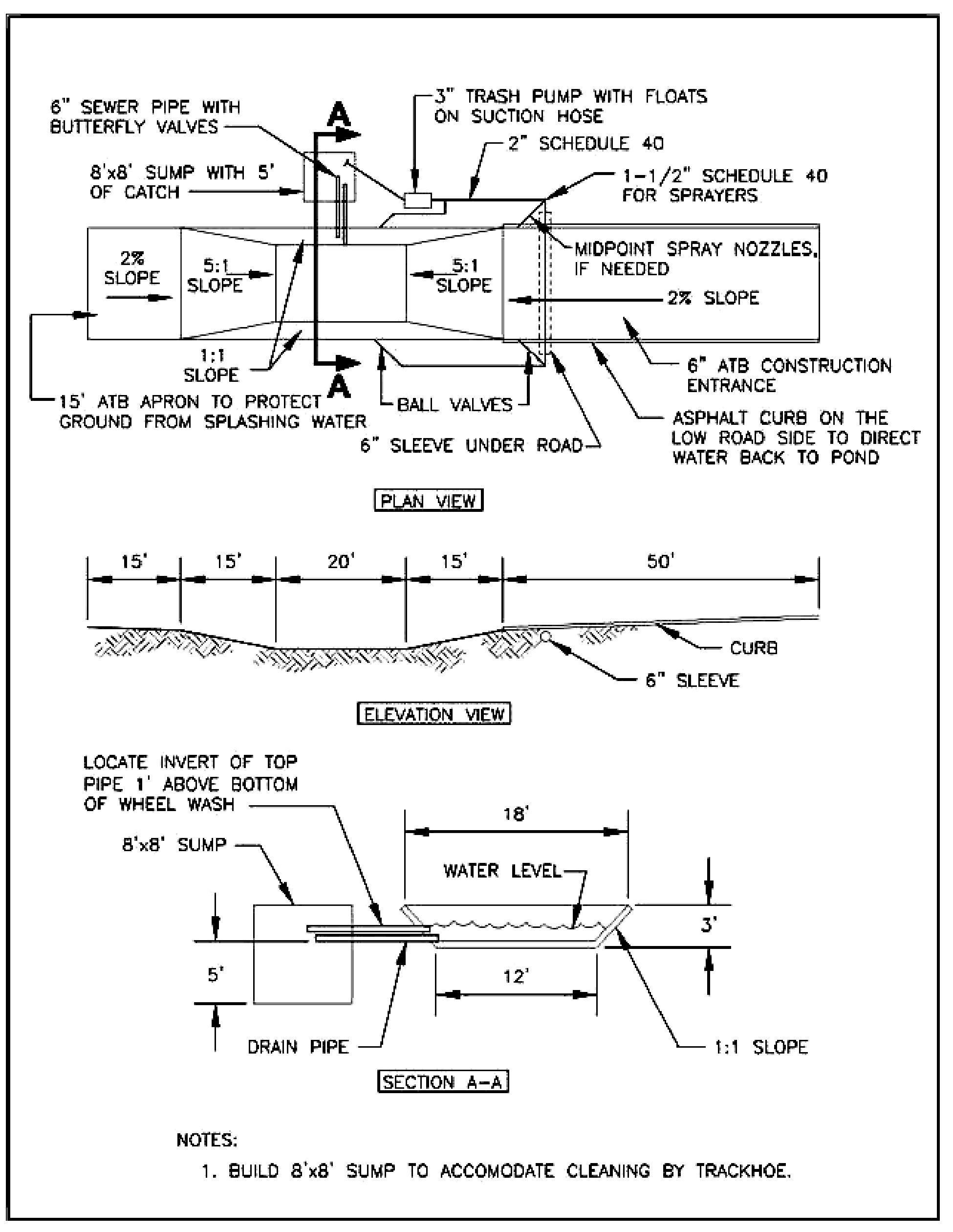Wheel washes reduce the amount of sediment transported onto paved roads by washing sediment from the wheels of motor vehicles prior to the motor vehicle leaving the construction site.
Can be used when a stabilized construction entrance (see BMP C105 - Stabilized Construction Entrance and Exit) is not preventing sediment from being tracked onto pavement.
Wheel washing is generally an effective BMP when installed with careful attention to topography. For example, a wheel wash can be detrimental if installed at the top of a slope abutting a right-of-way where the water from the dripping truck can run unimpeded into the street.
Pressure washing combined with an adequately sized and surfaced pad with direct discharge to a large 10-foot x 10-foot sump can be very effective.
Discharge wheel wash or tire bath wastewater to a separate onsite treatment system that prevents discharge to surface water or to the wastewater system with a City of Tacoma Special Approved Discharge permit.
Consider using a closed-loop recirculation system to conserve water.
Wheel wash or tire bath wastewater shall not include wastewater from concrete washout areas.
1.5.3 Design and Installation Specifications
A minimum of 6 inches of asphalt treated base (ATB) over crushed base material or 8 inches over a good subgrade is recommended to pave the wheel wash.
Use a low clearance truck to test the wheel wash before paving. Either a belly dump or lowboy will work well to test clearance.
Keep the water level from 12 to 14 inches deep to avoid damage to truck hubs and filling the truck tongues with water.
Figure 3 - 2: Wheel Wash provides a potential detail for a design of a wheel wash. The applicant is not required to construct the wheel wash per this detail.
An effective wheel wash will have:
A stabilized approach (pavement, permeable ballast, rumble plates) that is clear of exposed soil.
An appropriately sized wash deck that allows for at least one complete tire revolution (additional revolutions will be required for more cohesive soil)
Multiple angled spray patterns that reach all tires and the vehicle undercarriage
High-volume, moderate-pressure spray
A collection system for overspray and drip out
A stabilized egress (pavement, permeable ballast, rumble plates) that is clear of exposed soil.
Midpoint spray nozzles are only needed in extremely muddy conditions.
Polymers may be used to promote coagulation and flocculation in a closed-loop system. Polyacrylamide (PAM) added to the wheel wash water at a rate of 0.25 - 0.5 pounds per 1,000 gallons of water increases effectiveness and reduces cleanup time. If PAM is already being used for dust or erosion control and is being applied by a water truck, the same truck can be used to change the wash water.
The wheel wash should start out the day with fresh water.
The wash water should be changed as necessary with a minimum of once per day. On large earthwork jobs where more than 10-20 trucks per hour are expected, the wash water will need to be changed more often.
Wheel wash or tire bath wastewater shall be discharged to a separate onsite treatment system, such as closed-loop recirculation or land application, or to the wastewater system with a City of Tacoma Special Approved Discharge permit.
Figure 3 - 2: Wheel Wash
